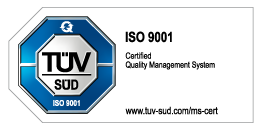Class Ge 6/6 II Electric Locomotive
Most Important Facts
Sound demo| Article No. | 22062 |
|---|---|
| Gauge / Design type | G / |
| Era | IV |
| Kind | Electric Locomotives |
Check with your local dealer Find Dealer
-
Product description
This is a model of the Rhaetian Railroad class Ge 6/6 II electric locomotive, road number 707. The locomotive has a prototypical paint and lettering scheme for Era IV. Four wheelsets are driven by two powerful Bühler motors with ball bearings. The locomotive has an mfx/DCC decoder with many light and sound functions. The double-arm pantographs are powered by servomotors and can be raised and lowered digitally. The locomotive has the correct reproduction of the articulation at its center and prototypical roof equipment. Length over the buffers 65 cm / 25-5/8".
Find more LGB explanation videos on our YouTube Channel.
Spare parts for our articles can be found here in our spare parts search.
-
Publications
- New items brochure 2020 - Catalog 2020 - Catalog 2021 - Catalog 2022
-
Prototype information
RhB Class Ge 6/6 II Electric Locomotive The Rhaetian Railroad (RhB) urgently needed more powerful locomotives for the power plant construction planned starting in the mid-Fifties for Bergell (Albigna) and the related extensive transport of cement from Untervaz near Landquart to the Grisons (up to 1,000 metric tons daily). They had to meet the following requirements: A locomotive by itself had to be able to haul a train with the largest permissible load for the couplers, which with a 3.5% grade (Albula Line) was around 250 metric tons and with a 4.5% grade (Küblis – Davos) was still around 180 metric tons. Such a unit was the result of cooperation with SLM (mechanical part) as well as BBC and MFO (electrical part) with three two-axle trucks and a divided locomotive body with articulation in the center, which best met the conditions and in particular the RhB's line characteristics. In 1955, two such class Ge 6/6 II locomotives were initially ordered and delivered by mid-1958 with road numbers 701 and 702. The outer trucks as well as the single-phase series-wound motors were identical with those of the class Ge 4/4 I, road numbers 601-610. The 294-kilowatt (400 horsepower) traction motors were controlled by a low-voltage stepped control system, which was state of the art for that time. Twenty-eight speed steps with voltages of around 70 volts to 480 volts and 15 electrical braking steps were present. The recuperative brake system worked on descending grades according to the proven MFO excitation motor circuit. These two six-axle units turned out so well that the RhB ordered another five units in 1964 for the Albula express trains that were becoming constantly heavier. These five units were delivered in 1965 with road numbers 703-707. While the preproduction locomotives still had doors on the ends (welded shut in 1968/69), the doors on the ends were done away with on the units built seven years later. Instead of three-part windshields, they had only two-part windshields. The ends of road numbers 701 and 702 were not altered to resemble the five newer locomotives until the Eighties. Starting in 1985 the class Ge 6/6 II units lost their green paint scheme and were gradually given the current red scheme as major overhauls came due. In 1998, the double arm pantographs finally had to make way for the modern single arm pantographs. After the introduction of the class Ge 4/4 III starting in 1994, the class Ge 6/6 II units wandered successively into freight service, but were still used now and then to pull passenger trains. With their comparatively high hourly output of 1,764 kilowatts / 2,365 horsepower, these six-axle units were still indispensable on the RhB after in some cases over 60 years of service.








